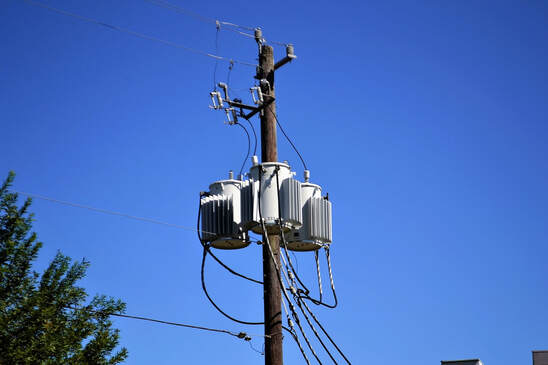Stress-Free Packing for Your Household Move Relocating to a new home offers excitement and challenges in equal measure. While the prospect of a fresh start is exhilarating, the process of packing and moving can often be overwhelming. Effective packing plays a crucial role in ensuring a smooth transition, regardless of whether you're moving across town or to a different state. In this comprehensive guide, we'll walk you through a step-by-step plan and essential packing tips to make your household move stress-free. From creating a moving timeline to packing fragile items with care, we've got you covered. Let's embark on your journey towards a hassle-free move.
Moving can be challenging, but with meticulous planning and effective packing strategies, you can streamline the process. By following this ultimate guide to stress-free packing for household moves, you'll be well-prepared for a smooth transition to your new home. REQUEST A QUOTE 832-736-0579
0 Comments
Houston's Rich Tapestry: A Journey Through History and Heritage Houston, Texas, often dubbed the "Bayou City," is a vibrant metropolis known for its diverse culture, booming economy, and rich history. As newcomers settle into this sprawling urban landscape, they quickly discover that Houston's identity is woven from a tapestry of influences, ranging from its pivotal role in space exploration to its deep connections to the oil industry and its melting pot of immigrant communities. Space City: Exploring Houston's Cosmic Connection One cannot delve into Houston's history without encountering its illustrious connection to space exploration. Home to the renowned NASA Johnson Space Center, Houston earned its moniker as "Space City" for its integral role in the Apollo missions and beyond. The Johnson Space Center stands as a beacon of scientific innovation, where astronauts train for their missions and groundbreaking discoveries shape humanity's understanding of the cosmos. The iconic phrase "Houston, we have a problem," immortalized during the Apollo 13 mission, serves as a testament to the city's pivotal role in guiding astronauts safely back to Earth against all odds. Visitors flock to Space Center Houston, the official visitor center of the Johnson Space Center, to witness firsthand the marvels of space exploration through interactive exhibits, historic artifacts, and educational programs. Fueling the Economy: Houston's Legacy in the Oil Industry Houston's rise as a global economic powerhouse owes much to its historical ties to the oil industry. Nestled in the heart of the Gulf Coast region, the city emerged as a hub for oil exploration, extraction, and refinement, fueling unprecedented growth and prosperity. The discovery of oil at Spindletop in nearby Beaumont in 1901 heralded the beginning of Houston's ascent as an energy capital. Throughout the 20th century, Houston became home to major oil companies, including ExxonMobil, Chevron, and Shell, shaping the city's skyline with towering skyscrapers and cementing its status as an energy epicenter. Today, the energy sector remains a driving force behind Houston's economy, with the city serving as a global headquarters for energy corporations and a center for research and innovation in renewable energy technologies. A Melting Pot of Cultures: Embracing Houston's Diversity One of Houston's most defining characteristics is its rich tapestry of cultural diversity. Over the decades, waves of immigrants from around the globe have flocked to the city, seeking new opportunities and contributing to its vibrant mosaic of traditions, languages, and cuisines. From bustling Chinatown and vibrant Little India to the lively neighborhoods of Montrose and the Heights, Houston is a melting pot where cultures collide and thrive. Hispanic, Asian, African, and European communities have all left indelible marks on Houston's cultural landscape, enriching the city with their customs, festivals, and traditions. Visitors and newcomers alike can experience the city's multicultural tapestry through its eclectic culinary scene, dynamic arts scene, and spirited celebrations of heritage, such as the Houston Livestock Show and Rodeo, the Houston International Festival, and the annual Lunar New Year festivities. Preserving the Past: Houston's Historic Legacy As Houston hurtles towards the future, it remains committed to preserving its storied past for future generations to cherish and learn from. Historic sites and landmarks dot the cityscape, offering glimpses into bygone eras and pivotal moments in Houston's history. From the Victorian-era architecture of the Heights to the preserved pioneer homesteads at the Heritage Society in Sam Houston Park, these sites serve as living testaments to the city's enduring spirit and resilience. Efforts to safeguard Houston's heritage extend beyond physical landmarks to encompass cultural institutions and educational initiatives aimed at fostering an appreciation for the city's diverse legacy. Museums, archives, and historical societies play vital roles in documenting and sharing Houston's history, ensuring that its stories are not lost to the sands of time. Embracing the Future: Houston's Continual Evolution As newcomers acclimate to life in Houston, they become part of a dynamic and ever-evolving tapestry that continues to shape the city's identity. Houston's rich history and heritage serve as both a foundation and a springboard for future growth and innovation. Whether exploring the cosmos, driving energy advancements, celebrating cultural diversity, or preserving the past, Houston remains a beacon of opportunity and possibility for all who call it home. In Houston, the past, present, and future converge to form a rich tapestry of experiences, each thread contributing to the vibrant fabric of the Bayou City. As newcomers embark on their own journeys through Houston's history and heritage, they become integral parts of this remarkable story, adding new layers of depth and color to its ongoing narrative of discovery and transformation. As they settle into their new surroundings, newcomers to Houston are invited to embrace the city's multifaceted identity, exploring its storied past, celebrating its cultural diversity, and contributing to its bright and promising future. In Houston, the journey is just beginning. REQUEST A QUOTE 832-736-0579 Expert Senior Relocation Services in Houston, TX - Your Smooth Transition
Embarking on a significant move, especially for seniors, is like navigating a thrilling adventure filled with unique challenges. Whether you're downsizing, venturing into a new abode closer to cherished friends and family, embracing the community vibes of senior living, or choosing the coziness of moving in with family, the journey of managing this move is nothing short of an epic quest. Fear not, for in this grand expedition, the aid of specialized senior relocation services transforms the entire process into a smooth and enjoyable odyssey. Behold, here are some essential moving tips, crafted for seniors seeking the support and expertise of our senior relocation assistance services for a stress-free relocation adventure.
Step One: Evaluate Your New Home Before the move, it's crucial to thoroughly assess your new home, considering factors like available space, floor plans, storage options, and modifications for safety. Senior relocation assistance services can provide insights into adapting to a new living environment, especially if downsizing is necessary. Step Two: Assess Needed Assistance Seniors may find that moving is not as simple as it used to be. Senior relocation assistance services can help in realistic assessments of what tasks can be managed independently and when additional support is required. Services can include help with packing delicate items, moving furniture, and handling overall logistics. Pro Tip: For a seamless move, seniors without a support network can consider engaging full-service senior relocation assistance services. These services often cater specifically to the needs of seniors during major moves. Step Three: Choose Specialized Senior Relocation Services Selecting the right senior relocation assistance services is crucial for a stress-free move. Look for services that encompass the entire relocation process, including packing materials, packing services, furniture disassembly, transportation, storage options, unloading, furniture reassembly, and disposal of packing materials. . Step Four: Develop a Moving Timeline Creating a moving timeline is essential for seniors, and senior relocation assistance services can play a pivotal role in planning. Consider factors like downsizing, planning yard sales, collecting medical records, researching specialized movers, setting a budget, and purchasing necessary supplies. Align the timeline with the specific services provided by senior relocation assistance teams. REQUEST A QUOTE 832-736-0579 Step Five: Collaborate with Senior Relocation Professionals for Packing Engaging senior relocation assistance services ensures that packing is handled with expertise and care. These professionals understand the unique needs of seniors, enabling a smoother packing process. Seek assistance in areas like sorting, labeling, and ensuring items are packed securely. Step Six: Unpack with Guidance Unpacking is simplified with the guidance of senior relocation assistance services. These professionals can provide support in coordinating with roommates, prioritizing unpacking tasks, and ensuring a smooth transition into the new living space. By incorporating senior relocation assistance services and following a well-organized plan, seniors can navigate their move with reduced stress and enjoy a successful transition to their new home. REQUEST A QUOTE 832-736-0579 Packing Checklist: Essentials for A Smooth Moving Day
Chinese New Year, also known as Lunar New Year, will be on Saturday, February 10, 2024. The vibrant tapestry of Houston is woven with threads from cultures around the world, and as this auspicious day dawns, the city explodes in a kaleidoscope of color, tradition, and joyful revelry. The celebrations will last 15 days, ending on the night of the next full moon, which falls on February 24, 2024. The vibrant Lantern Festival will mark the official close of the festivities on that day.
A City Steeped in Diversity: Houston boasts the largest Asian American population in the United States, with a particularly strong Chinese community residing in the bustling Asiatown district. This diversity fuels the city's Lunar New Year celebrations, making them some of the most diverse and authentic in the nation. From traditional lion dances and vibrant parades to delectable culinary experiences and cultural workshops, Houston offers a multitude of ways to experience the essence of this time-honored tradition. Festivities Abound: The city comes alive with various events spread across multiple locations, catering to different interests and preferences. One of the largest celebrations is the Texas Lunar Festival at the Alief Career Center, typically held on February 10, 2024. This event features live music, cultural performances, and a vibrant marketplace filled with crafts, food, and Lunar New Year decorations. Meanwhile, the Houston Chinese Community Center throws a free, family-friendly festival [Date(s) of festival], with traditional lion dances, delicious food vendors, and a Lucky Find Bazaar teeming with treasures. Discovery Green, a popular downtown park, hosts its own celebration with the iconic Lee's Golden Dragon performance, engaging activities for children, and diverse food stalls. For a unique twist, the Lunar Night Market at Bravery Chef Hall offers an electrifying nighttime experience with live music, DJs, pop-up shops, and delectable bites from various Asian cuisines. This event typically takes place on February 10, 2024 at 9:00 p.m. Beyond the Celebrations: Beyond the major events, the spirit of Lunar New Year permeates throughout the city. Many restaurants, especially in Asiatown, offer special menus featuring traditional dishes like dumplings, noodles, and fish, typically available throughout the period] of Lunar New Year. Shops showcase festive decorations and unique gifts, while cultural centers host workshops on everything from lion dance to calligraphy. The Year of the Dragon Takes Flight: This year, Lunar New Year ushers in the Year of the Dragon, a powerful symbol of strength, good luck, and ambition. Expect to see this mythical creature come to life through dragon dances, decorations, and even culinary creations throughout Houston. The Dragon's energy is said to bring positive change and prosperity, making it a particularly auspicious time to celebrate and set new goals. More Than Just a Celebration: Lunar New Year in Houston is more than just a festive occasion; it's a powerful testament to the city's cultural diversity and inclusivity. It's a time to appreciate the rich heritage of the Asian American community while fostering understanding and connection between different cultures. By participating in the celebrations, Houstonians of all backgrounds can experience the beauty and significance of this ancient tradition, creating lasting memories and fostering a sense of community. Planning Your Celebration: Whether you're a seasoned reveler or a curious newcomer, there's something for everyone at Houston's Lunar New Year celebrations. Here are some tips to plan your experience:
Lunar New Year celebrations in Houston, and across the globe, involve various exciting traditions:
REQUEST A QUOTE 832-736-0579
Celebrating Grit and Grandeur: Black Heritage Day at the Houston Livestock Show and Rodeo 20242/6/2024  Black Heritage Day Houston Livestock & Rodeo 2024 Black Heritage Day Houston Livestock & Rodeo 2024 The Houston Livestock Show and Rodeo, a Texas tradition steeped in Western heritage, shines a special light on Black history and culture every year with its vibrant Black Heritage Day celebration. This day, held on March 1st, transcends mere commemoration, transforming the rodeo grounds into a tapestry of pride, education, and entertainment, reminding everyone of the undeniable contributions of Black cowboys and cowgirls to the Lone Star State and beyond. Stepping onto the NRG Park grounds on Black Heritage Day is akin to entering a living museum. Historical exhibits showcase the stories of legendary figures like Bill Pickett, the inventor of "bulldogging," and Martha "Cleopatra" Washington, the first Black woman to win a major rodeo competition. Their tales of resilience, courage, and pioneering spirit resonate through the generations, inspiring young minds and igniting imaginations. The air thrums with the energy of live music. Gospel choirs raise their voices in soaring harmonies, while contemporary bands infuse the atmosphere with pulsating rhythms. Dance groups, adorned in vibrant colors, captivate the audience with energetic routines, celebrating the rich tapestry of Black dance traditions. The spirit of the day unfolds on multiple stages, each offering a unique window into the diverse facets of Black culture. But Black Heritage Day is not just about entertainment. Educational booths dot the landscape, offering visitors the opportunity to delve deeper into the often overlooked narrative of Black cowboys and cowgirls. Experts share stories of trailblazers who carved their own paths in a challenging industry, facing discrimination and prejudice head-on. Interactive displays bring history to life, showcasing the crucial role African Americans played in the development of ranching and rodeo culture. The Champion Wine Garden and The Hideout transform into cultural havens, featuring special performances and presentations dedicated to highlighting Black excellence in various fields. Aspiring young artists rub shoulders with established musicians, exchanging knowledge and forging connections that pave the way for future generations. This exchange of ideas and experiences ensures that the legacy of Black contributions to rodeo culture continues to thrive. The highlight of the day, undoubtedly, is the parade. As elaborately decorated floats wind their way through the cheering crowds, a sense of shared heritage and community spirit fills the air. Young riders, dressed in traditional cowboy attire, proudly display their horsemanship, drawing inspiration from the pioneers who came before them. The energy is palpable, a testament to the enduring legacy of Black cowboys and cowgirls in the rodeo arena. But Black Heritage Day extends beyond the festivities. It serves as a platform for dialogue and understanding, fostering connections between diverse communities. The day provides a unique opportunity for visitors of all backgrounds to learn about, appreciate, and celebrate the often-overlooked contributions of Black individuals to the Texan identity. However, the impact of Black Heritage Day transcends the confines of a single day. It serves as a powerful reminder that Black history is not just a separate chapter, but an integral thread woven into the very fabric of the American narrative. It encourages open dialogue, dismantles misconceptions, and paves the way for a more inclusive and equitable future. As the sun sets on Black Heritage Day at the Houston Livestock Show and Rodeo, the spirit of celebration lingers. The stories shared, the lessons learned, and the connections forged leave a lasting impact. It is a day that reminds us of the power of shared heritage, the importance of recognizing diverse contributions, and the need to continue writing this inclusive chapter in Texan and American history. The lessons learned and the connections forged on Black Heritage Day serve as a beacon of hope and inspiration, reminding us that together, we can create a future where everyone's story is celebrated and everyone's dreams have the chance to grow. This year's Black Heritage Day at the Houston Livestock Show and Rodeo promises to be another unforgettable celebration, filled with music, dance, food, and meaningful experiences. So mark your calendars, saddle up, and get ready to be part of this inspiring and educational event that leaves a lasting impact on both hearts and minds. REQUEST A QUOTE 832-736-0579 Hold onto your hats and dust off those cowboy boots because the Houston Livestock Show and Rodeo (HLSR) is back in town, ready to rock NRG Park from February 27th to March 17th, 2024! But wait, there's more – kick off your Texan adventure with three days of Pre-Rodeo Events beginning on February 22, 2024!
If you've got a hankering for heart-stopping rodeo action, jaw-dropping livestock showcases, and a carnival that's more fun than a barrel of monkeys, then you won't want to miss this Texan extravaganza! Rodeo Rumble: Get ready to cheer, scream, and possibly even holler at the eight mind-blowing rodeo events that will leave you on the edge of your seat. From cowboys conquering bucking broncos to fearless cowgirls racing barrels, the HLSR is a showdown of skill and bravery that will have you shouting, "Yeehaw!" in no time. Livestock Bonanza: Step into a world where animals rule the roost at the Livestock Show. From mooing cows to baa-ing sheep, this isn't your average petting zoo – it's a full-blown animal kingdom! Brush up on your farming knowledge with educational exhibits that'll have you feeling like an honorary Texan farmer in no time. Carnival Capers: The carnival at HLSR is a thrill-seeker's paradise. Strap in for heart-pounding rides, try your luck at classic carnival games, and let your taste buds do a happy dance with fair food that's more decadent than a Texas barbecue. And don't forget to take a spin on the Ferris wheel, La Grande XL – where the views are as big as the Lone Star State itself! Concert Commotion: As the sun sets over the Texan sky, get ready to kick up some dust with live performances from music royalty. Chris Stapleton, Luke Combs, and the legendary George Strait are set to take the stage at the Star Stage, turning the HLSR into a full-blown concert extravaganza. Grab your dancing boots – it's time to two-step under the stars! Wild West Wonderland: The HLSR isn't just about rodeos and concerts – it's a Wild West Wonderland! Explore educational exhibits that'll make you say, "Well, I never knew that!" Indulge in culinary delights from vendors that put the "yee" in "yeehaw," and shop 'til you drop for handcrafted treasures that scream Texas charm. Roundup Your Visit: Before you lasso your way into the HLSR, make sure to snag your tickets online or at the gate – and trust us, the grounds season passes are the real Texan steal. Get familiar with the lay of the land at NRG Park, plan your transportation, and don't forget your cowboy hat – this is Texas, after all! Tips and Tricks: Arriving early is the secret to skipping the lines for the hottest events, and downloading the HLSR app is like having a backstage pass to all the rodeo action. Stay hydrated with free water stations, slap on some sunscreen, and be ready to make friends with fellow rodeo revelers! Conclusion: So, folks, there you have it – the Houston Livestock Show and Rodeo 2024 is gearing up to be the talk of the town. Kick off the excitement with three days of Pre-Rodeo Events starting on February 22, 2024, and then continue the thrill ride from February 27th to March 17th. Whether you're a seasoned rodeo veteran or a city slicker looking for a taste of Texas magic, the HLSR is the only place to be. So, grab your boots, throw on that cowboy hat, and get ready for a Texan adventure that'll have you shouting "y'all come back now, ya hear!" REQUEST A QUOTE 832-736-0579  Houston, the vibrant and ever-growing metropolis of Texas, is known for many things: its booming economy, diverse culture, and, of course, its unpredictable weather. In the past eight months, from May 2023 to January 2024, Houstonians have experienced a rollercoaster ride of temperatures, precipitation, and everything in between. Summer Sizzle: The summer months, May through August, were a scorcher in Houston. Average high temperatures soared past 90°F (32°C), with some days reaching a stifling 100°F (38°C). The humidity clung to the air like a wet blanket, making even the slightest exertion feel like a marathon. Houston summer, hot sky Rainfall, however, was scarce during this period. The city received only a fraction of its usual summer precipitation, leading to concerns about drought and water restrictions. The parched landscape and wilting vegetation were stark reminders of the importance of water conservation. Hurricane Harvey's Haunting Legacy: The memory of Hurricane Harvey, which devastated Houston in 2017, remained fresh in the minds of many residents. While the city was fortunate to avoid a direct hit from any major hurricanes this summer, the threat of heavy rain and flooding was always present. In June, Tropical Storm Claudette dumped several inches of rain on the city, causing localized flooding and reminding everyone of the city's vulnerability to extreme weather events. Autumnal Interlude: As September arrived, Houston transitioned into a more pleasant phase. The scorching temperatures finally dipped into the low 80s°F (27°C), offering a much-needed respite from the summer heat. The days were still sunny, but the evenings brought a welcome coolness, making outdoor activities enjoyable once again. Houston autumn, falling leaves. Rainfall also increased during this period, providing much-needed relief to the parched land. Lush greenery returned, and residents flocked to parks and green spaces to soak up the beauty of the season. Winter's Whimsy: October ushered in the much-anticipated winter months, a time for Houstonians to trade in their flip-flops for boots and sweaters. The temperatures continued to drop, with average highs settling around the mid-70s°F (24°C). While Houston doesn't experience the kind of harsh winters seen in other parts of the country, the occasional cold snap brought with it the thrill of seeing frost on rooftops and the chance to wear a real coat for once. Houston winter, light snowy roads The winter months also brought sporadic rain showers, adding a touch of unpredictability to the normally dry season. The occasional downpour would briefly transform the city streets into shimmering rivers, only to disappear as quickly as it arrived. Looking Ahead: As we approach the final stretch of January, the weather in Houston remains unpredictable. The next few weeks could bring anything from sunny skies and mild temperatures to chilly mornings and the possibility of another cold snap. One thing is for sure, though: Houston's weather will continue to surprise and entertain us in the months to come. Whether it's the scorching heat of summer, the refreshing rains of autumn, or the occasional dusting of snow in winter, one thing is certain: Houston's weather is never boring. Beyond the Averages: While average temperatures and precipitation paint a broad picture of Houston's weather, the true story lies in the details. The city's unique location at the convergence of different climate zones – the humid Gulf Coast, the arid Chihuahuan Desert, and the temperate Central Texas Hill Country – creates a microclimate that can be wildly variable. It's not uncommon for Houstonians to experience all four seasons in a single week, with temperatures swinging from sweltering to chilly and back again. This variability can be challenging to predict, but it also adds to the city's charm. Whether you're a seasoned Houstonian or a newcomer to the city, one thing is for sure: you'll never get bored with the weather in Houston. So, keep an eye on the forecast, pack for all seasons, and be prepared for anything. After all, that's just part of the fun of living in this vibrant and ever-surprising city. REQUEST A QUOTE 832-736-0579. H-Town's Back!: Texans Make a Splash in the Playoffs Yo, Houston! Forget earthquakes, the city shook this January from a different kind of rumble: the roar of Texans fans finally seeing their boys back in the playoffs after snoozing for five years. NRG Stadium was lit like a disco ball on steroids, a million miles away from the bleh vibes of past seasons. The drought was officially over, and the Bayou was bubbling with excitement thicker than gumbo. This wasn't just some ordinary playoff ticket; it was a victory lap after years of struggle. Think wonky drafts, QB carousels that would make your head spin, and enough coaching changes to fill a phone book. But Coach Romero, cool as a cucumber, whipped this young squad into a team that could shred defenses like cheese. Jaxon "The Hurricane" Hayes, our QB and hometown hero, slinging lasers with his arm and zipping past dudes like Sonic on roller skates. Sky Samuels, the wideout, soaring through defenders like a human highlighter. And rookie running back Marcus "Mudslide" Miller? Dude plowed through tackles like a runaway bulldozer. Defense? Don't even get me started. The linebacker duo of "Thunder" Thomas and "Lightning" Lewis built a wall against running backs, while safety Jada Jones, aka the "Hurricane's Eye," snagged interceptions like nobody's business. This wasn't just talent; these guys were glued together by the tough times they'd faced, like a band of bros who'd conquered the cafeteria together. First stop: Wild Card showdown against the Colts, our archrivals. Tension? Thicker than Ms. Johnson's gravy. But the Texans, fueled by the cheers that could wake the dead, unleashed a fury. Hayes was on fire, picking apart the Colts' defense like a vulture with a buffet. Mudslide rumbled through tackles, and the final whistle blew with a Texans W so loud it probably reached Jupiter. The stadium went bananas, a celebration that would make Beyoncé jealous. Next, a trip to the frozen tundra of Green Bay to face the legendary Packers. The game was a nail-biter, a back-and-forth fight where points were scarcer than unicorns. Just when hope was fading faster than a snowball in July, with seconds left on the clock, BAM! Hayes connects with Sky for a Hail Mary touchdown that defied physics and made everyone lose their minds. The stadium went nuclear, a moment that'll be talked about for generations. The final chapter? The AFC Championship against the Baltimore Ravens. The Texans remind us why we fell in love with football in the first place, showed that a young team can do amazing things, and prove that Houston fans are the most loyal, die-hard crew in the whole dang galaxy. One thing's for sure: the Texans are back, and their roar is only getting louder. Buckle up, football world, H-Town's coming for you! Show your support for the Houston Texans!
REQUEST A QUOTE 832-736-0579 What to Do in Case of a Power Outage in Houston, TX Power outages can happen unexpectedly, and being prepared can make a significant difference in how you navigate through such situations. Whether it's due to severe weather, equipment failure, or other unforeseen circumstances, here are some essential steps to take if you find yourself facing a power outage in Houston, Texas. 1. Stay Calm and Assess the Situation: The first and most important step is to remain calm. Assess whether the power outage is localized to your home or if it's affecting a larger area. Check if your neighbors are also experiencing an outage to determine the scope of the issue. 2. Report the Outage: If you haven't already, report the outage to your utility provider. In Houston, the major utility providers are CenterPoint Energy and Entergy. Contact information for reporting outages is as follows:
4. Preserve Food and Medications: If the outage is prolonged, take steps to preserve perishable food by keeping the refrigerator and freezer doors closed as much as possible. Use coolers with ice packs for essential medications that require refrigeration. 5. Unplug Appliances: Unplug electronic devices and appliances to prevent damage from power surges when the electricity is restored. This precaution can also help reduce the initial demand on the power grid when it comes back online. 6. Stay Informed: Stay informed about the outage by tuning in to a battery-operated radio for updates from local news and emergency services. Follow updates from your utility provider through their official channels. 7. Check on Vulnerable Neighbors: Look out for elderly neighbors, individuals with medical conditions, or those who may need assistance during a power outage. Offer help and check if they are safe and have the resources they need. 8. Plan for Alternative Power Sources: Consider having alternative power sources such as a generator or solar-powered chargers for electronic devices. Be cautious when using generators, and follow safety guidelines to prevent carbon monoxide poisoning. 9. Follow Local Authorities' Instructions: Stay informed about any instructions or recommendations from local authorities. This could include evacuation orders or specific safety measures based on the nature of the outage. 10. Resources for Updates: To stay informed about potential power outages, residents can utilize the following resources:
By taking these proactive steps and utilizing available resources, you can better cope with a power outage in Houston and ensure the safety and well-being of yourself and your community. Stay prepared, stay informed, and stay safe. REQUEST A FREE QUOTE 832-736-0579
|





